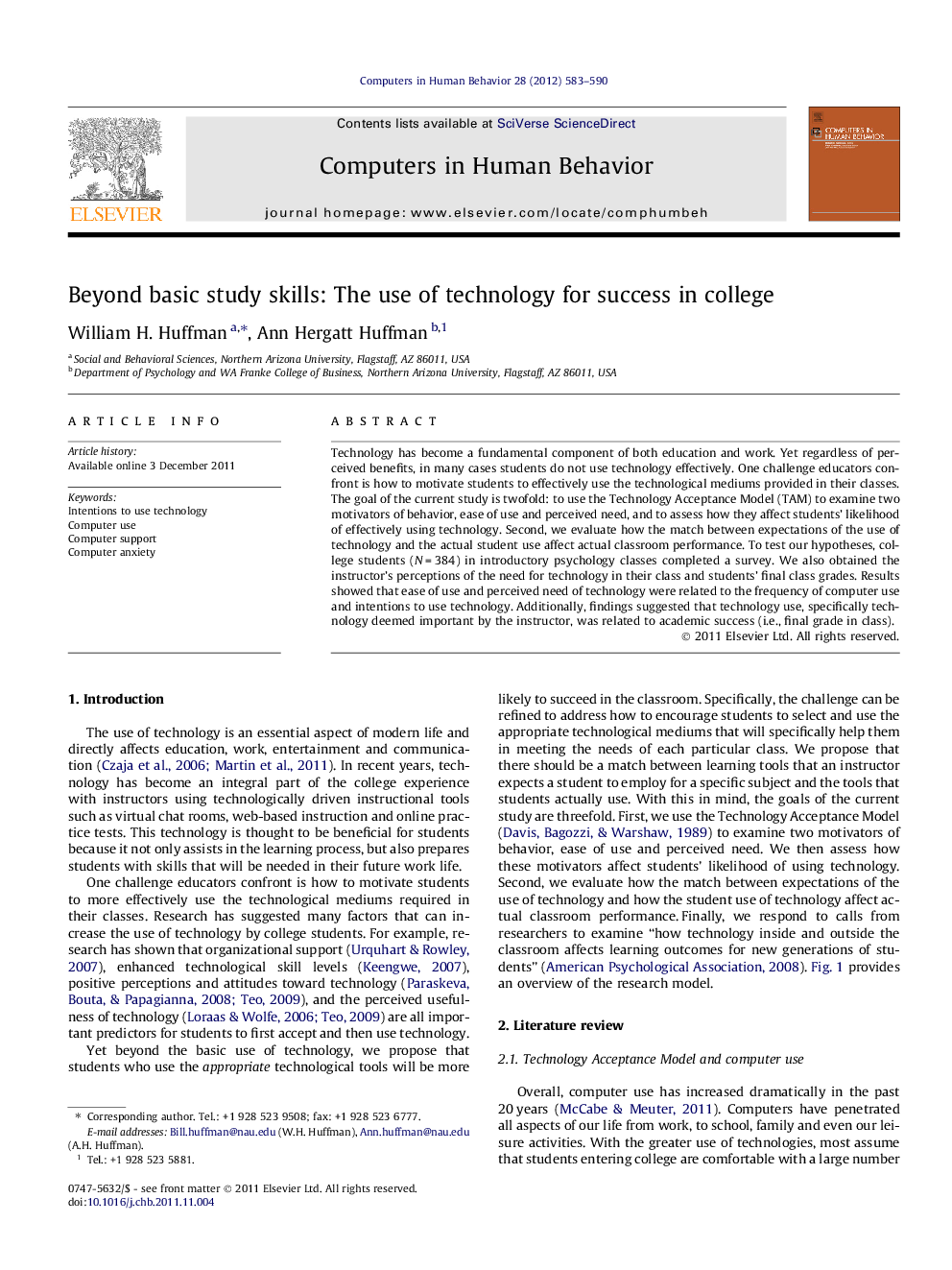| Article ID | Journal | Published Year | Pages | File Type |
|---|---|---|---|---|
| 351648 | Computers in Human Behavior | 2012 | 8 Pages |
Technology has become a fundamental component of both education and work. Yet regardless of perceived benefits, in many cases students do not use technology effectively. One challenge educators confront is how to motivate students to effectively use the technological mediums provided in their classes. The goal of the current study is twofold: to use the Technology Acceptance Model (TAM) to examine two motivators of behavior, ease of use and perceived need, and to assess how they affect students’ likelihood of effectively using technology. Second, we evaluate how the match between expectations of the use of technology and the actual student use affect actual classroom performance. To test our hypotheses, college students (N = 384) in introductory psychology classes completed a survey. We also obtained the instructor’s perceptions of the need for technology in their class and students’ final class grades. Results showed that ease of use and perceived need of technology were related to the frequency of computer use and intentions to use technology. Additionally, findings suggested that technology use, specifically technology deemed important by the instructor, was related to academic success (i.e., final grade in class).
► Goal of study was to examine technology use and student success. ► The Technology Acceptance Model was used as a theoretical framework. ► We compared instructors’ stated needs to students’ use of technology. ► Ease of use and perceived need of technology were related to technology use. ► Technology use was related to academic success (i.e., final grade in class).
